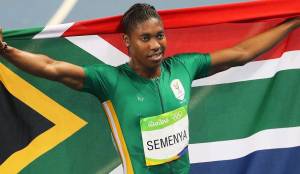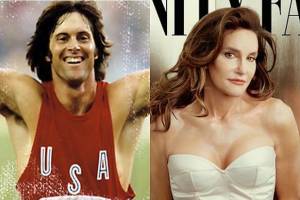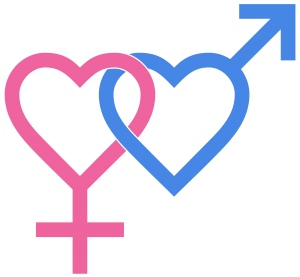Come with me, if you will, back to the 1958−59 school year in Dallas. I refer specifically to Edwin J. Kiest Elementary, on our city’s eastern border, ‘neath the Texas sky. As a member of Mrs. Inez Smithey’s first-grade class, I was adjusting to the rigors of academia and the process of socialization. At that time, Kiest was an overwhelmingly European-American setting with no students or teachers of African or Asian  descent; I remember two brothers of Hispanic descent. The age of “diversity” and “inclusiveness” had yet to begin. My focus is not race and ethnicity, however, but gender relations. Lacking a sister, I knew nothing about females of the species. I was clueless regarding anatomical differences or sex, the thing that birds and bees were reputed to do.
descent; I remember two brothers of Hispanic descent. The age of “diversity” and “inclusiveness” had yet to begin. My focus is not race and ethnicity, however, but gender relations. Lacking a sister, I knew nothing about females of the species. I was clueless regarding anatomical differences or sex, the thing that birds and bees were reputed to do.
A mysteriously strong pull
Even so, I felt something very strong my first year at Kiest. The magnetic pull toward girls in those pre-pubescent days was so strong that I sometimes had trouble concentrating in class. There was a cute girl named Vicky who liked to wear pink dresses, and I sometimes—OK, often—had thoughts of stealing a kiss from her. Had I done so, Mrs. Smithey would have sternly ordered me to go stand in the hall so I demurred. But the point is that this attraction to female classmates was powerful and ever-present. What was it? All I knew about girls was that they were different. Yes, different. It’s stating the obvious, I know, but I liked how the female face differed from mine, not to mention the higher pitched voice. They were different from me, and I liked it in a profound way. All very mysterious. Several years would pass before I learned there was a term describing me: I was a heterosexual. Heterosexuals, I found, were attracted to “the other.” Vicky, for example. A homosexual—grade school kids made many a sniggering jest about this—preferred his or her own kind. As for the nature-versus-nurture causative factors, I do not know and would not presume to go there. In my own case, I cannot imagine that my parents did anything to lead me one way or the other. Whether it was genetic, something in my brain or maybe in my solar plexus, boy−girl, man−woman, male−female has been my reality from the start.
Never, not for the briefest moment, has there been any wavering in my identity as a “straight” (a term I do not like) male. But as a college graduate and having lived for more than six decades, I cannot fail to be aware of the vast variety in human sexuality. This spectrum is quite broad. Putting it simply, there are all kinds. Besides the aforementioned homosexuals (gays and lesbians, they are called), there are bisexuals, people who “swing both ways.” Let us not ignore the existence of hermaphrodites—those  born with some combination of male and female genitalia and blended psychology along with it. Caster Semenya, women’s gold medalist in the 800 meters at the 2016 Summer Olympics, is a fine example. Some people are physically “normal” but are asexual. That is, they are not attracted to men or women. No libido at all! There are people who get their thrills from bondage and sado-masochism, be they dominant or submissive. Cross-dressing has been around for centuries.
born with some combination of male and female genitalia and blended psychology along with it. Caster Semenya, women’s gold medalist in the 800 meters at the 2016 Summer Olympics, is a fine example. Some people are physically “normal” but are asexual. That is, they are not attracted to men or women. No libido at all! There are people who get their thrills from bondage and sado-masochism, be they dominant or submissive. Cross-dressing has been around for centuries.
I rag on Bruce again
And now, of course, we have transgender men and women. I want to make clear that my sympathy for these people is genuine. The American Psychiatric Association calls it gender dysphoria. They are born male but “identify” as female or vice versa. Until recently, they had to keep quiet about their true feelings. These days, with surgery, drugs and a far more open and accepting society, they can actually change genders. I have serious reservations about this because “she” is a pseudo-female, and “he” is a pseudo-male. Two years ago, I read a fawning article (with accompanying video) in the New York Times about a “man” and “woman” who had met and fallen in love. I was simply not convinced. Both, in my view, were faking it. And I do not have the stomach to think about them engaging in sex. Reference must be made to another Olympian—Bruce Jenner, winner of the decathlon in the 1976 Games. Bruce, all 6′ 2″ of him, has grown his hair out, had his Adam’s apple removed, loaded up on estrogen, and started wearing slinky dresses and calling himself Caitlyn. With no apologies for using male pronouns, I point out that he has so far chosen not to undergo “bottom surgery.” Nor would I recommend that he take that drastic step.
 I have probably ragged on Bruce enough, but one more thing. In interviews he has given since making his big transition in April 2015, he divides the world into two groups: those who “get it” and those who “don’t get it.” He seems to put me in the latter group.
I have probably ragged on Bruce enough, but one more thing. In interviews he has given since making his big transition in April 2015, he divides the world into two groups: those who “get it” and those who “don’t get it.” He seems to put me in the latter group.
Am I a reactionary or a truth-teller for saying that it all gives me the creeps? What follows are a few wry lines from the introductory page of my web site: “I was born male, and I identify as male. I have a strong and natural attraction to females. Anything other than the male−female template baffles me. The words of an ex-girlfriend are still pertinent: ‘It comes down to a man, a woman and a bed.’ I’ve never gone walking around in women’s underwear. In fact, it’s never occurred to me to try. Does this mean I can’t be a member of the QBTGL community?”
Guys and girls, that’s it
Shame on me if I deny the long-standing discrimination against and ostracism of gay people. I was a junior at Bryan Adams High School when Lynne Bliven freely admitted her sexual orientation to me. Not only that, but she introduced me to numerous lesbian friends of hers and took me to some eye-opening gay bars in the Oak Lawn section of Dallas. Strange as it sounds, I lived with several gay men in the summer of 1974. Both of these episodes were a long time ago, I concede. And to my knowledge, none of my friends or colleagues in Korea, whether male or female, are homosexual; I am certain that none of them are transgender.
 A few days ago, I was registering for the Association of Writing Programs and had to fill out a form. When it came to gender, I had many choices! They are in this order: female, male, agender, androgynous, bigender, cisgender, gender fluid, genderqueer, intersex, transsexual, transgender, two-spirit and “a gender not identified here.” I hate to be hypersensitive, and maybe my perspective is skewed by being so far from the USA. But this (and things like it) seems to be part of an agenda wherein such crap is forced upon us. Am I to look at all those choices and not laugh or be offended? Am I to think it’s OK or normal? Most of the terms, I do not know what they mean and am not inclined to look them up.
A few days ago, I was registering for the Association of Writing Programs and had to fill out a form. When it came to gender, I had many choices! They are in this order: female, male, agender, androgynous, bigender, cisgender, gender fluid, genderqueer, intersex, transsexual, transgender, two-spirit and “a gender not identified here.” I hate to be hypersensitive, and maybe my perspective is skewed by being so far from the USA. But this (and things like it) seems to be part of an agenda wherein such crap is forced upon us. Am I to look at all those choices and not laugh or be offended? Am I to think it’s OK or normal? Most of the terms, I do not know what they mean and am not inclined to look them up.
I am tired of being accused of “heterosexual oppression” or “homophobia.” The fact that these PC terms have gained traction in the media, in academia and in most political discourse is frustrating. I do not like having this stuff shoved down my throat or being put on the defensive. For all our problems and misunderstandings (talk to my GF—she’ll tell you), nothing is more sublime than how man and woman complement each other and render each other whole. This is what makes the world go around.

Add Comment